How to Maintain High Performance of Rubber Fenders in Cold Weather
Rubber fenders play a crucial role in the marine industry by protecting vessels and docking structures during berthing. However, the performance of rubber fenders can be significantly affected by cold weather. This article delves into how rubber fenders perform in cold weather, the challenges they face, and the solutions developed to enhance their functionality in such conditions.
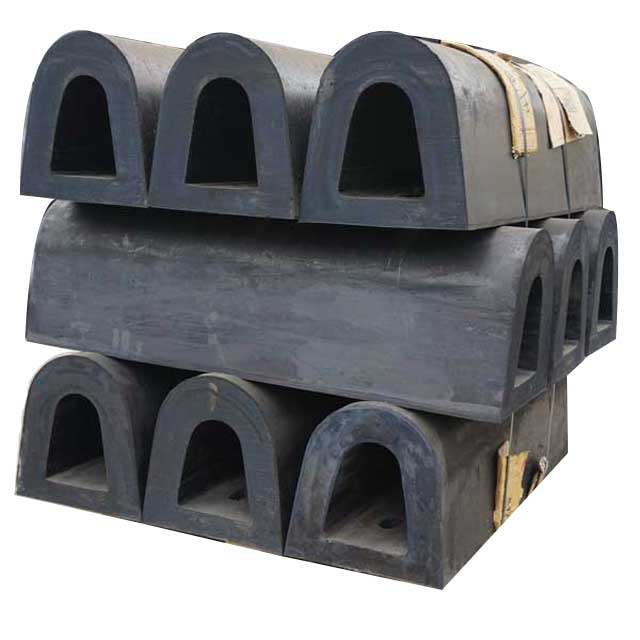
Understanding Rubber Fenders
Rubber fenders are made from various types of rubber, including natural rubber, styrene-butadiene rubber (SBR), and ethylene-propylene-diene monomer (EPDM). These materials are chosen for their excellent elasticity, energy absorption capabilities, and durability. The design and composition of rubber fenders allow them to deform under pressure and return to their original shape, thus dissipating the energy from impacts.
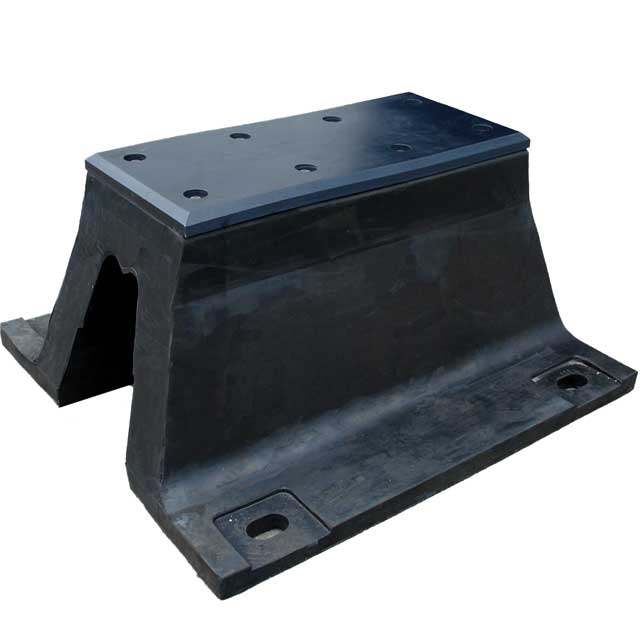
Challenges of Rubber Fenders in Cold Weather
This chart summarizes the main challenges and their impacts, providing a clear overview of the issues rubber fenders face in cold weather conditions.
| Challenge | Description | Impact on Performance |
| Increased Stiffness | Rubber becomes stiffer and less flexible at low temperatures. | Reduced energy absorption capacity. |
| Brittleness | Prolonged exposure to sub-zero temperatures can make rubber brittle. | Higher susceptibility to cracking and breaking. |
| Thermal Contraction | Rubber contracts in cold temperatures, creating gaps between the fender and dock/vessel. | Reduced contact area, compromising energy absorption. |
| Moisture Infiltration | Moisture can seep into rubber, and when it freezes, it expands. | Potential internal damage and compromised integrity. |
| Ice Formation | Ice can form on the fender’s surface. | Affects fender flexibility and performance. |
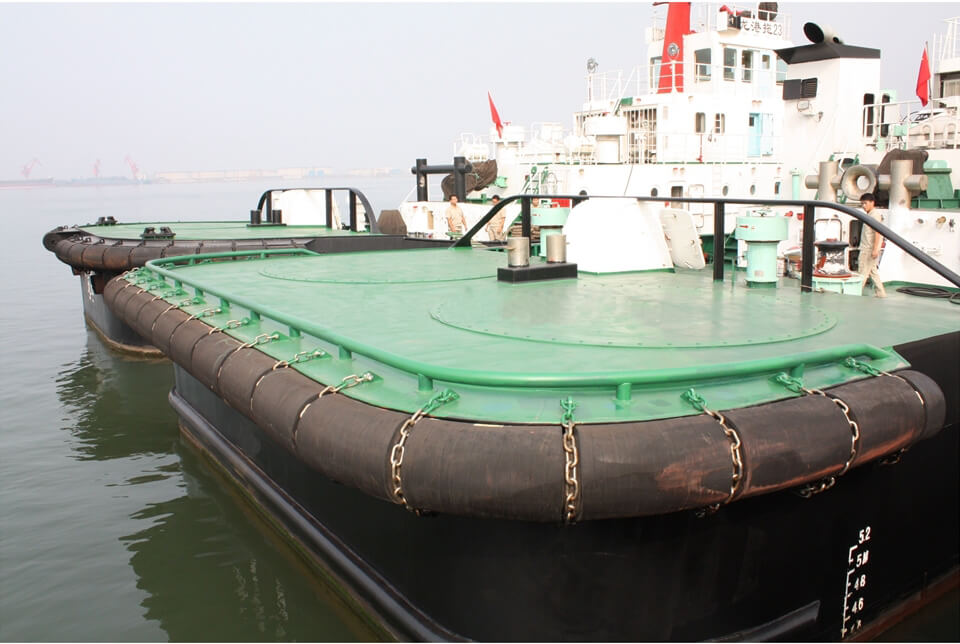
Maintaining Performance of Rubber Fenders in Cold Weather
1. Material Selection
- Use Cold-Resistant Rubber Compounds: Opt for rubber materials like EPDM, which retain flexibility and durability at low temperatures. These compounds are designed to perform well even in extreme cold conditions.
2. Design Adaptations
- Thicker Walls and Robust Structures: Enhance the design of fenders with thicker walls and more durable structures to counteract the brittleness caused by cold weather. This helps maintain their energy absorption capacity.
3. Protective Coatings
- Moisture Barriers: Apply protective coatings to prevent moisture infiltration, which can lead to freezing and internal damage. These coatings act as barriers, keeping the rubber dry and intact.
4. Regular Maintenance
- Inspection and Repair: Conduct regular inspections to identify early signs of brittleness, cracking, or other damage. Promptly repair or replace damaged fenders to prevent major failures.
- Cleaning: Keep fenders clean to prevent ice formation and ensure optimal performance.
5. Monitoring Systems
Real-Time Tracking: Implement monitoring systems to track the temperature and condition of the fenders. Real-time data allows for proactive maintenance and timely interventions to address potential issues.
6. Proper Installation
Secure Attachment: Ensure that fenders are securely attached to the dock or vessel to prevent gaps caused by thermal contraction. Proper installation minimizes the risk of reduced contact area and compromised energy absorption.
7. Storage Practices
Controlled Environment: Store spare fenders in a controlled environment to protect them from extreme cold when not in use. This helps maintain their integrity and readiness for deployment.
Technological Advancements in Rubber Fenders for Cold Weather
Recent technological advancements have significantly enhanced the performance of rubber fenders in cold weather conditions. These innovations address the challenges posed by low temperatures, ensuring the effectiveness and durability of rubber fenders remain effective and durable.
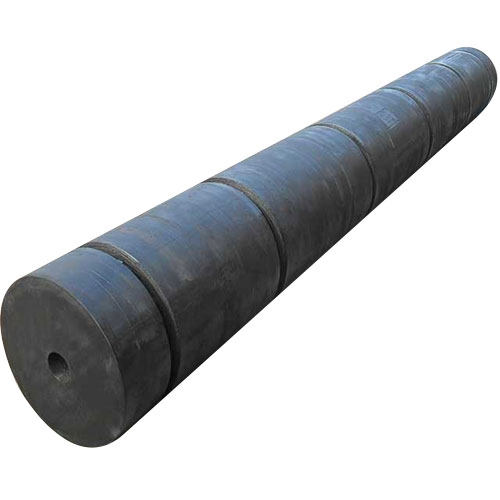
1. Advanced Rubber Compounds
Low-Temperature Formulations: New rubber formulations specifically designed for cold environments offer superior flexibility, durability, and energy absorption at low temperatures. These compounds maintain their properties even in extreme cold, reducing the risk of brittleness and cracking.
2. Hybrid Materials
Rubber-Polyurethane Combinations: Hybrid fenders that combine rubber with materials like polyurethane provide enhanced low-temperature performance. Polyurethane’s resilience complements rubber’s energy absorption capabilities, resulting in fenders that are both flexible and durable in cold conditions.
3. Enhanced Protective Coatings
- Moisture-Resistant Coatings: Advanced coatings prevent moisture infiltration, which can lead to internal damage when the water freezes and expands. These coatings act as barriers, keeping the fender’s integrity intact in wet and cold environments.
- Ice-Repellent Surfaces: Coatings that repel ice formation on the fender’s surface help maintain flexibility and performance, ensuring that the fender can still absorb impacts effectively.
4. Smart Fenders
- Integrated Sensors: Smart fenders equipped with sensors can continuously monitor temperature, strain, and overall condition. These sensors provide real-time data, allowing for proactive maintenance and timely interventions to address potential issues before they lead to failures.
- Remote Monitoring: The integration of IoT technology enables remote monitoring and data analysis, providing operators with valuable insights and alerts on fender performance in cold weather conditions.
5. Optimized Design Features
- Adaptive Structures: Fenders with adaptive structures that adjust to temperature changes can maintain their energy absorption capabilities across a range of temperatures. These designs incorporate flexible joints and materials that expand and contract without compromising performance.
- Modular Designs: Modular fenders allow for easy replacement of damaged sections, reducing downtime and ensuring continuous protection even in harsh conditions.
6. Thermal Insulation Layers
- Insulating Materials: Incorporating thermal insulation layers within the fender structure helps to maintain the internal temperature of the fender, reducing the impact of external cold temperatures and preventing brittleness.
7. Enhanced Manufacturing Processes
- Precision Molding Techniques: Advances in molding techniques ensure that rubber fenders are produced with consistent quality and precise material properties, enhancing their performance in cold weather.
- Quality Control Innovations: Improved quality control processes during manufacturing ensure that each fender meets stringent standards for low-temperature performance.
8. Field Testing and Simulation
- Cold Weather Simulations: Extensive field testing and advanced simulation techniques allow manufacturers to test fender performance under controlled cold weather conditions, ensuring reliability before deployment in real-world scenarios.
- Accelerated Aging Tests: These tests simulate long-term exposure to cold weather, helping to identify potential issues and optimize fender designs for extended durability.
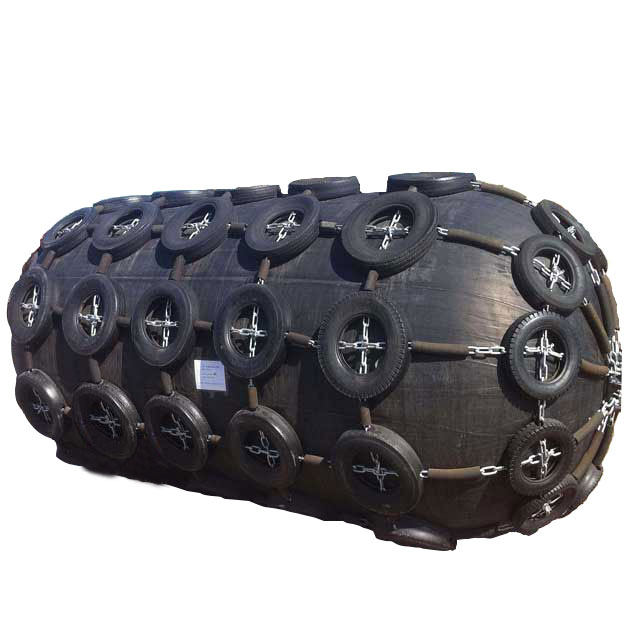
Conclusion
Performance of rubber fenders in cold weather is a critical consideration. While cold temperatures pose significant challenges, advancements in materials and design have greatly enhanced the ability of rubber fenders to perform effectively in such conditions.Through the use of advanced rubber compounds, hybrid materials, protective coatings, and smart technology, rubber fenders can maintain their energy absorption capabilities and durability even in the harshest cold weather environments.

